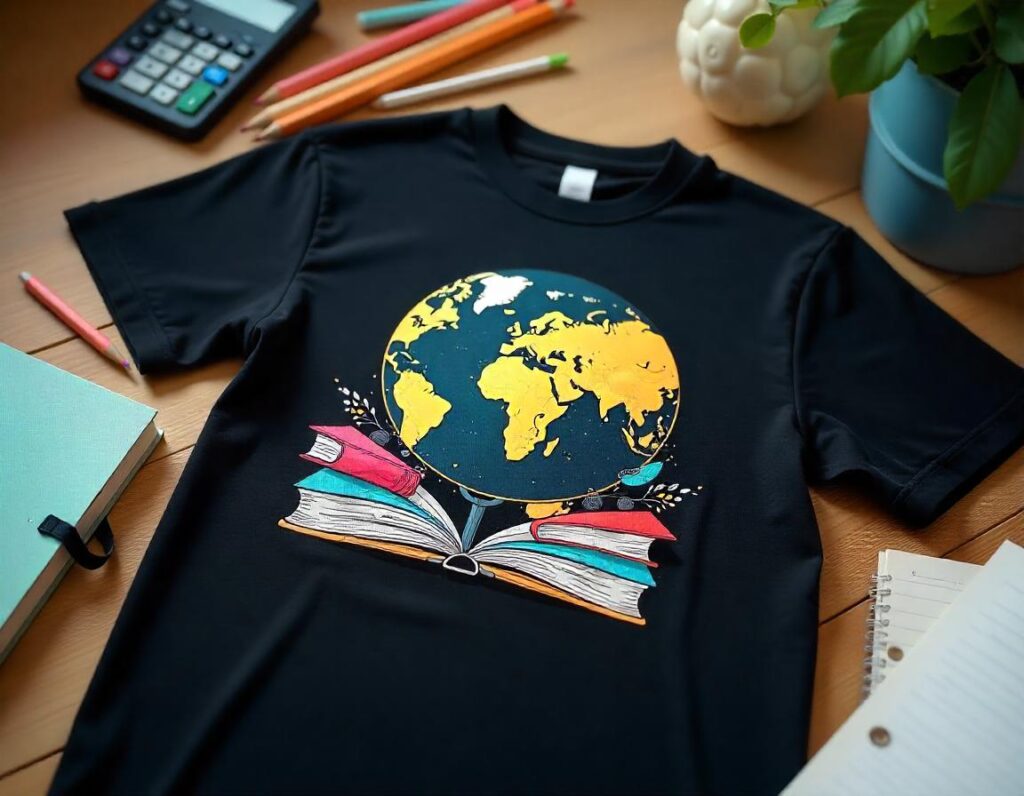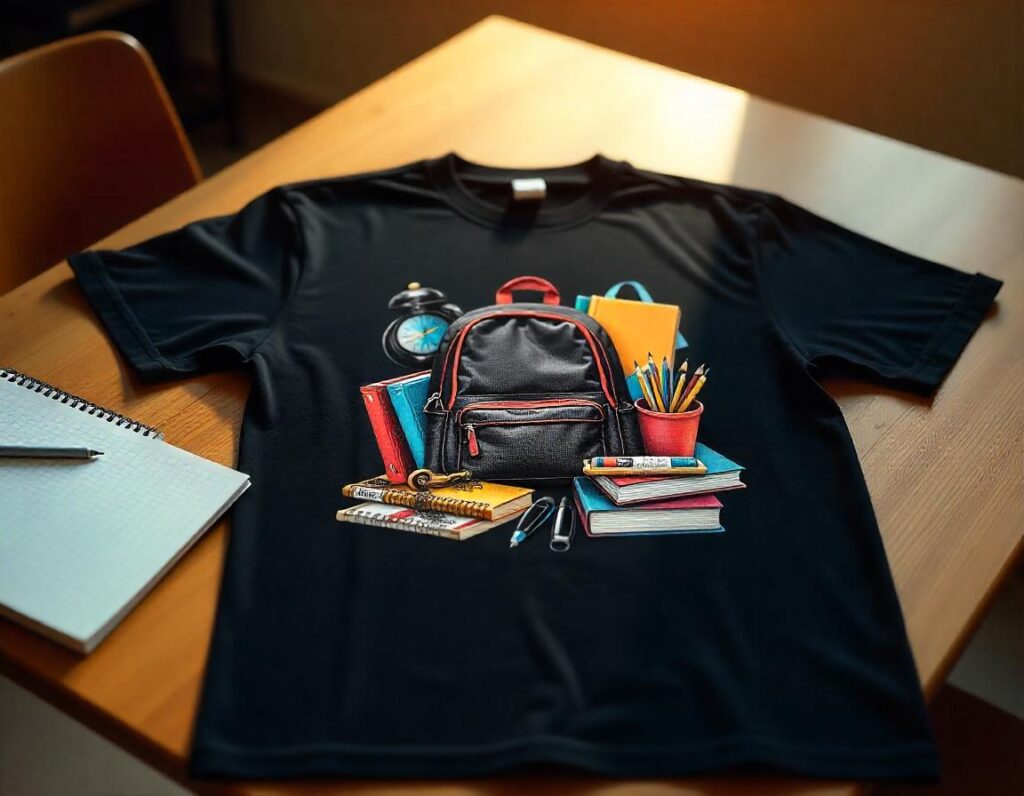When it comes to mastering the art of Direct-to-Film (DTF) printing, a well-organized DTF supplies inventory is essential for success. Whether you are a seasoned professional or a DIY enthusiast, having access to the right DTF printing supplies will not only enhance your creativity but also streamline your custom apparel printing process. From quality DTF inks to adhering powders, every component in your inventory plays a crucial role in achieving vibrant and durable prints. In this guide, we will explore effective ways to build your DTF inventory, detailing the necessary equipment and supplies that will help you thrive in the growing world of DTF printing. Get ready to elevate your printing projects and learn tips on how to build a comprehensive inventory that meets all your creative needs.
Delving into the world of Direct-to-Film printing, one quickly realizes the importance of assembling a functional collection of essential supplies. This unique printing technique provides unparalleled versatility, allowing for stunning designs on various fabrics, making it a top choice for custom apparel creations. To maximize the quality of your projects, understanding how to curate the right repertoire of DTF materials is paramount. In this guide, we will navigate the necessary equipment, such as specialized printers and high-quality transfer films, while also offering best practices for sourcing and organizing your printing essentials. Discover how a well-stocked DTF supplies inventory can unlock new dimensions in your DIY custom apparel endeavors.
Understanding the DTF Printing Process
The Direct-to-Film (DTF) printing process is a revolutionary method in the realm of custom apparel printing. It starts with the design, which is printed onto a special transfer film using dedicated DTF inks. Unlike traditional methods, DTF printing allows for detailed images and vibrant colors, thanks to the unique ink formulation that bonds perfectly with the transfer film. Once printed, the film is sprinkled with adhesive powder, which is crucial for ensuring that the ink adheres to the fabric during heat transfer.
To transfer the image from the film to the fabric, a heat press is employed, applying high temperatures and pressure to create a long-lasting bond. This process not only makes DTF printing versatile across various fabric types but also delivers quality that speaks volumes in the custom apparel industry. Consequently, understanding DTF printing is essential for anyone looking to dive into custom garment designs, as it encompasses the vital knowledge of equipment setup and material selection.
Essential Components of a DTF Supplies Inventory
Creating a DTF supplies inventory is about more than just having the right printer or heat press; it’s about assembling a toolkit of essential components that work harmoniously together. At the core of any effective DTF setup is the DTF printer. Investing in a printer specifically designed for this technology, like those offered by Epson or Brother, ensures that your prints are clear and professional. Equally important are DTF inks, which differ from typical inks due to their ability to form a strong bond with the films and fabrics.
Moreover, having a reliable source for transfer film and adhesive powder is crucial for successful printing. The transfer film acts as the canvas for your designs and should be polyester-based to produce the best results. Adhesive powder, applied after printing on the film, ensures that your prints maintain their integrity once transferred onto garments. By carefully selecting these components, you’ll be building a robust DTF supplies inventory that supports quality production.
Steps to Source Quality DTF Printing Supplies
Sourcing high-quality DTF printing supplies is a vital step in building your inventory. Start by researching reputable suppliers that specialize in DTF materials. Websites like Picasso DTF Print and Duit Design are excellent sources for finding reliable DTF inks, transfer films, and adhesive powders. In addition, look for suppliers who offer bulk pricing or loyalty discounts, which can help reduce your overall costs as you grow your business.
Another important aspect of sourcing is to read customer reviews and forums for recommendations on the best products to use. The DTF printing community is filled with individuals willing to share their experience, which can factor into your choices. Furthermore, establishing a good relationship with your suppliers can lead to better service and access to exclusive deals, ensuring you always have the quality materials needed for producing stunning prints.
Setting Up Your DTF Printing Workstation
Creating an organized and efficient DTF workstation is essential for optimal production. Start by selecting a dedicated space in your home or workshop where you can arrange your equipment for maximum efficiency. Your DTF printer should be positioned for easy access, while the heat press should be accessible for quick transfers. Additionally, ensure that your workstation has bright, adequate lighting to avoid any mishaps during design application.
Storage is also a crucial element to consider; use shelves or carts to keep your DTF supplies neatly organized. Having a dedicated space for your DTF inks, films, and powders prevents clutter and allows for easy inventory tracking. By establishing a streamlined workspace, you’ll boost your productivity and reduce the time spent searching for necessary supplies during busy printing sessions.
Testing Your DTF Setup for Quality Assurance
Before launching into larger production runs, testing your DTF setup is crucial to ensure everything is functioning correctly. This phase includes producing sample prints to check your printer’s settings, ink saturation levels, and the quality of the transfer process. Testing also gives you the opportunity to tweak your heat press settings to maximize adhesion and durability of the prints. Regularly conducting these tests can prevent costly mistakes resulting from incorrect settings.
Moreover, adjusting your RIP (Raster Image Processor) software settings during this testing stage is key. The RIP software allows you to modify color management and ink density, which can significantly affect your final product. By refining these elements before full-scale production, you not only enhance quality but also streamline your overall printing process, leading to increased customer satisfaction.
Exploring Additional Resources for DTF Printing Mastery
To further enhance your DTF printing skills, tapping into a variety of online resources can provide valuable information and support. Websites and forums dedicated to DTF printing often host tutorials, design guides, and troubleshooting tips that cater specifically to beginners and seasoned professionals alike. Engaging with these communities can reveal best practices and innovative techniques to elevate your custom apparel printing.
In addition, consider taking advantage of e-books, webinars, and workshops offered by DTF experts. These resources often cover advanced topics, such as how to create unique DTF designs and market your custom prints effectively. As trends and technologies in the DTF landscape evolve, ongoing education and engagement with the DTF community will keep your skills sharp and your business competitive.
Frequently Asked Questions
What essential equipment is needed for building a DTF supplies inventory?
To build a DTF supplies inventory, essential equipment includes a specialized DTF printer, high-quality DTF inks, transfer film, adhesive powder, and a reliable heat press. These components are crucial for achieving high-quality prints on fabrics.
How can I source quality DTF printing supplies for my inventory?
You can source quality DTF printing supplies from reputable suppliers like Picasso DTF Print and Duit Design. Research is key; look for products with good reviews and build relationships with suppliers for potential discounts.
What role does adhesive powder play in my DTF supplies inventory?
Adhesive powder is vital in your DTF supplies inventory, as it ensures that the ink adheres properly to the fabric during the heat transfer process. Investing in high-quality adhesive powder will lead to better print durability and quality.
How do I organize my workstation for effective DTF printing?
To optimize your workstation for DTF printing, keep it clean with adequate lighting and position your DTF printer, heat press, and materials to enhance workflow efficiency. An organized space will streamline your printing process and improve output.
What are the best practices for testing my DTF printing setup?
Best practices for testing your DTF printing setup involve conducting several test prints using various settings. Adjust your printer and RIP software settings to fine-tune print quality and ensure consistent results before starting larger production runs.
What should I consider when choosing a DTF printer for my inventory?
When selecting a DTF printer, consider factors such as speed, color accuracy, compatibility with DTF inks, and overall production volume. Brands like Epson and Brother are popular for delivering reliable performance in the DTF printing market.
| Supply Type | Description | Recommended Brands |
|---|---|---|
| DTF Printer | A specialized printer needed for high-quality DTF prints. | Epson, Brother |
| DTF Inks | Inks designed to bond effectively with films and fabrics. | Mimaki, Epson |
| Transfer Film | High-quality films that capture printed designs for transfer. | N/A |
| Adhesive Powder | Powder that helps ink adhere to the fabric during transfer. | N/A |
| Heat Press | Equipment needed to apply heat and pressure for transfers. | N/A |
Summary
DTF supplies inventory is essential for anyone looking to engage in Direct-to-Film printing effectively. This inventory serves as the foundation for your printing operation, ensuring you have all the necessary tools and materials at hand. By carefully selecting high-quality printers, DTF inks, transfer films, adhesive powders, and heat presses, you can set yourself up for success in the art of DTF printing. The process involves careful research, sourcing reliable materials, and establishing an efficient workstation to maximize workflow. Additionally, ongoing education and community engagement can further enhance your skills and keep you updated with best practices, making your DTF printing venture both rewarding and successful.



